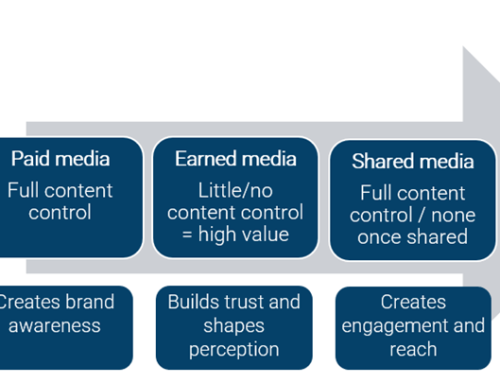In 2016, we looked at the phenomenon of influencer marketing, how it works and the benefits it can provide to your company, but we thought it would be useful to share some practical tips on how to go about id entifying potential influencers.
entifying potential influencers.
As we know, influencer marketing targets specific individuals, rather than directly targeting a larger audience, which is critical for driving the message of a brand to the wider market. This gives you the opportunity to be much more tailored with your messaging and tools. However, it is sometimes daunting when deciding who to target and where to start. That’s why we’ve put together some simple steps for identifying potential influencers.
- Set clear goals
The first step is to put targets and a strategy in place before beginning the identification process. So, set the objectives that you’re looking to achieve. These could be anything from increasing brand awareness or overall engagement, to increasing leads and sales, or a combination of all of those. Making sure these objectives and goals are SMART will allow you to evaluate how successful a campaign is/has been at a variety of stages. The target can then be changed, if necessary, to increase success rate.Within the science and tech industries, it can be more difficult for marketing campaigns, such as those targeting influencers, to be signed off by senior management. With specific targets and, through the use of data, an explanation as to why this type of campaign is useful will allow senior figures to see the advantages. - Develop a shortlist
The next step is the identification process. But how can you find the correct influencers for your company? Take a step back. What type of person might you actually be looking for? What is their job role and passion? And how do they influence your audience? What is important to them?The rise in differing formats of communication, like social media, has meant that there have been changes in potential influencers for these campaigns. Patients, payers, advocacy groups, care givers, policy makers, professional associations, as well as bloggers and journalists are all among this new wave of potential influencers. But where can you find them? Peer reviewed articles are a great place to start, as well as Researchgate, Google Scholar and conference keynote speakers. This form of research can help you to uncover highly respected key opinion leaders. Social media, Google alerts and search engines are other ways of finding influencers and may lead you to alternative individuals, such as bloggers or patients.With technology evolving almost every day, there are a number of other new programmes available to help you identify potential influencers. Brandwatch, Sprinklr and Traackr are all examples of platforms that can help you with this. Using analytics, intelligence and audience insight, these paid-for services can be of real use to help you to identify the real influencers in your market and sub-markets.
If you’re looking to find existing users of your instruments, on the other hand, reviewing who has co-presented with your company before, as well as asking your sales teams for satisfied customers are both ways in which to do this.
- Validate the shortlist
Now comes the crucial part: do your research. It’s important to understand how your potential influencers work and what their opinions are. Do your company’s values align with their views? Ensure this is clear before diving in head first. Reading their work in the media and connecting on social media is the best way to familiarise yourself with them and help you decipher whether they are the correct influencer to promote your brand.If they have already purchased a product from you, it’s important to understand how their relationship with your sales team works. Often, sales teams are less willing for their customers to be contacted, but we do find that more customers than you might expect are interested in taking part in these sorts of projects. It is therefore important to ensure it is positioned correctly to customers – appeal to the philosophy of sharing information as the basis of scientific endeavour.
Identifying influencers requires research and work if you are to promote your brand to the correct audience. However, if you get this right, you should see the benefits. It’s important to understand your audience and utilise the correct tools; and whilst these may be paid-for, it could be the difference between a brand’s failure or success.
Want to know more about influencer marketing and how it could help your business? Give us a call on +44 (0) 1477 539539 or email [email protected].
By Trystan George, Junior Account Manager at The Scott Partnership.





